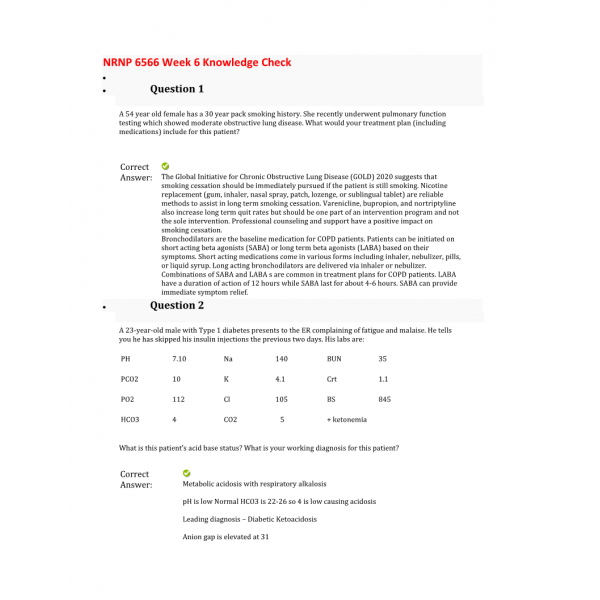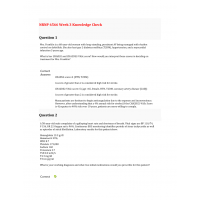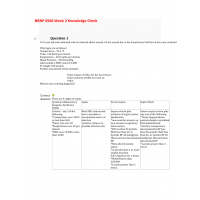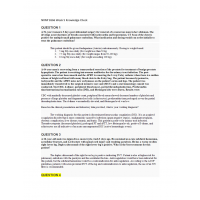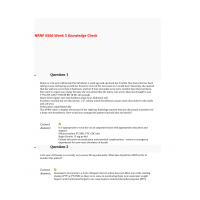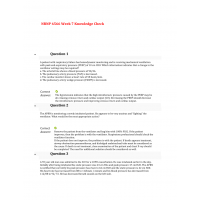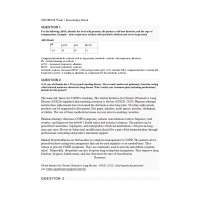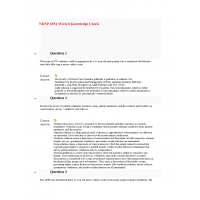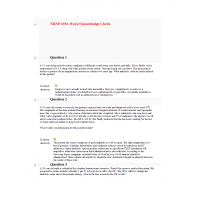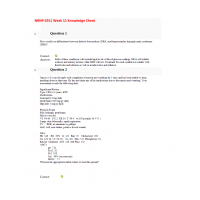NRNP 6566 Week 6 Knowledge Check
NRNP 6566 Week 6 Knowledge Check
1. A 54 year old female has a 30 year pack smoking history. She recently underwent pulmonary function testing which showed moderate obstructive lung disease. What would your treatment plan (including medications) include for this patient?
2. A 23-year-old male with Type 1 diabetes presents to the ER complaining of fatigue and malaise. He tells you he has skipped his insulin injections the previous two days. His labs are:
What is this patient's acid base status? What is your working diagnosis for this patient?
3. For the following ABGs, identify the level of hypoxemia, the primary acid base disorder, and the type of compensation. Example - acute respiratory acidosis with metabolic alkalosis and severe hypoxemia
4. A 66 year old male is diagnosed with COPD. His current medications include hydrochlorothiazide 25 mg po daily, lisinopril 20 mg po daily, and Crestor 10 mg po daily. The APRN has ordered salbutamol 4 mg po TID. What side effects may occur?
5. A 62 year old patient with COPD is hypoxic and SOB. He is currently on BiPAP with the order reading 12/5 100% Rate 12. Explain what each number in the BIPAP order means. Describe what BIPAP is and when it can and cannot be utilized
6. For the following ABGs, identify the level of hypoxemia, the primary acid base disorder, and the type of compensation. Example - acute respiratory acidosis with metabolic alkalosis and severe hypoxemia
7. For the following ABGs, identify the level of hypoxemia, the primary acid base disorder, and the type of compensation. Example - acute respiratory acidosis with metabolic alkalosis and severe hypoxemia
8. A 14 year old female asthmatic is brought to the ER in moderate respiratory distress. Her PEF is 55% of predicted. What would your immediate medication orders include?
9. A 65-year-old female suddenly becomes hypotensive one day following surgery for a fractured femur. Her ABG before surgery on room air showed a pO2 of 84 and pCo2 of 39.
What are the major differential diagnoses to consider as an etiology for the change in her status?
10. For the following ABGs, identify the level of hypoxemia, the primary acid base disorder, and the type of compensation. Example - acute respiratory acidosis with metabolic alkalosis and severe hypoxemia
| Institution & Term/Date | |
| Term/Date | Walden University |
-
$9.99

